Diacylglyceryl-N,N,N-trimethylhomoserine-dependent lipid remodeling in a green alga, Chlorella kessleri
- PMID: 35017659
- PMCID: PMC8752610
- DOI: 10.1038/s42003-021-02927-z
Diacylglyceryl-N,N,N-trimethylhomoserine-dependent lipid remodeling in a green alga, Chlorella kessleri
Abstract
Membrane lipid remodeling contributes to the environmental acclimation of plants. In the green lineage, a betaine lipid, diacylglyceryl-N,N,N-trimethylhomoserine (DGTS), is included exclusively among green algae and nonflowering plants. Here, we show that the green alga Chlorella kessleri synthesizes DGTS under phosphorus-deficient conditions through the eukaryotic pathway via the ER. Simultaneously, phosphatidylcholine and phosphatidylethanolamine, which are similar to DGTS in their zwitterionic properties, are almost completely degraded to release 18.1% cellular phosphorus, and to provide diacylglycerol moieties for a part of DGTS synthesis. This lipid remodeling system that substitutes DGTS for extrachloroplast phospholipids to lower the P-quota operates through the expression induction of the BTA1 gene. Investigation of this lipid remodeling system is necessary in a wide range of lower green plants for a comprehensive understanding of their phosphorus deficiency acclimation strategies.
© 2022. The Author(s).
Conflict of interest statement
The authors declare no competing interests.
Figures
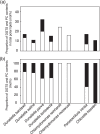
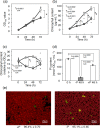

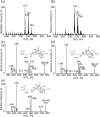
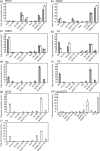
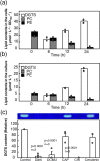
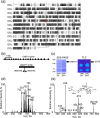
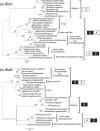
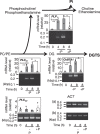
Similar articles
-
Sinorhizobium meliloti phospholipase C required for lipid remodeling during phosphorus limitation.Proc Natl Acad Sci U S A. 2010 Jan 5;107(1):302-7. doi: 10.1073/pnas.0912930107. Epub 2009 Dec 14. Proc Natl Acad Sci U S A. 2010. PMID: 20018679 Free PMC article.
-
Phosphate starvation in fungi induces the replacement of phosphatidylcholine with the phosphorus-free betaine lipid diacylglyceryl-N,N,N-trimethylhomoserine.Eukaryot Cell. 2014 Jun;13(6):749-57. doi: 10.1128/EC.00004-14. Epub 2014 Apr 11. Eukaryot Cell. 2014. PMID: 24728191 Free PMC article.
-
The PHO signaling pathway directs lipid remodeling in Cryptococcus neoformans via DGTS synthase to recycle phosphate during phosphate deficiency.PLoS One. 2019 Feb 21;14(2):e0212651. doi: 10.1371/journal.pone.0212651. eCollection 2019. PLoS One. 2019. PMID: 30789965 Free PMC article.
-
Betaine lipids: Biosynthesis, functional diversity and evolutionary perspectives.Prog Lipid Res. 2025 Jan;97:101320. doi: 10.1016/j.plipres.2025.101320. Epub 2025 Jan 8. Prog Lipid Res. 2025. PMID: 39793901 Review.
-
Membrane lipids in plant-associated bacteria: their biosyntheses and possible functions.Mol Plant Microbe Interact. 2003 Jul;16(7):567-79. doi: 10.1094/MPMI.2003.16.7.567. Mol Plant Microbe Interact. 2003. PMID: 12848422 Review.
Cited by
-
slr2103, a homolog of type-2 diacylglycerol acyltransferase genes, for plastoquinone-related neutral lipid synthesis and NaCl-stress acclimatization in a cyanobacterium, Synechocystis sp. PCC 6803.Front Plant Sci. 2023 Apr 26;14:1181180. doi: 10.3389/fpls.2023.1181180. eCollection 2023. Front Plant Sci. 2023. PMID: 37180399 Free PMC article.
-
Lipid bilayer properties potentially contributed to the evolutionary disappearance of betaine lipids in seed plants.BMC Biol. 2023 Nov 28;21(1):275. doi: 10.1186/s12915-023-01775-z. BMC Biol. 2023. PMID: 38017456 Free PMC article.
-
Preferential phosphatidylglycerol synthesis via phosphorus supply through rRNA degradation in the cyanobacterium, Synechocystis sp. PCC 6803, under phosphate-starved conditions.Front Plant Sci. 2024 Jan 29;15:1335085. doi: 10.3389/fpls.2024.1335085. eCollection 2024. Front Plant Sci. 2024. PMID: 38348270 Free PMC article.
-
Influence of Nitrogen-Modified Atmosphere Storage on Lipid Oxidation of Peanuts: From a Lipidomic Perspective.Foods. 2024 Jan 16;13(2):277. doi: 10.3390/foods13020277. Foods. 2024. PMID: 38254578 Free PMC article.
-
Evidence for phosphate-dependent control of symbiont cell division in the model anemone Exaiptasia diaphana.mBio. 2024 Sep 11;15(9):e0105924. doi: 10.1128/mbio.01059-24. Epub 2024 Aug 6. mBio. 2024. PMID: 39105583 Free PMC article.
References
-
- Nakamura Y. Phosphate starvation and membrane lipid remodeling in seed plants. Prog. Lipid Res. 2013;52:43–50. - PubMed
-
- Sato N. Roles of the acidic lipids sulfoquinovosyl diacylglycerol and phosphatidylglycerol in photosynthesis: their specificity and evolution. J. Plant Res. 2004;117:495–505. - PubMed
-
- Brown AE, Elovson J. Isolation and characterization of a novel lipid, 1(3),2-diacylglyceryl-(3)-O-4′-(N,N,N-trimethyl)homoserine, from Ochromonas danica. Biochemistry. 1974;13:3476–3482. - PubMed
-
- Künzler K, Eichenberger W. Betaine lipids and zwitterionic phospholipids in plants and fungi. Phytochemistry. 1997;46:883–892. - PubMed
-
- Sato N, Furuya M. Distribution of diacylglyceryltrimethylhomoserine in selected species of vascular plants. Phytochemistry. 1984;23:1625–1627.
Publication types
MeSH terms
Substances
Grants and funding
LinkOut - more resources
Full Text Sources

